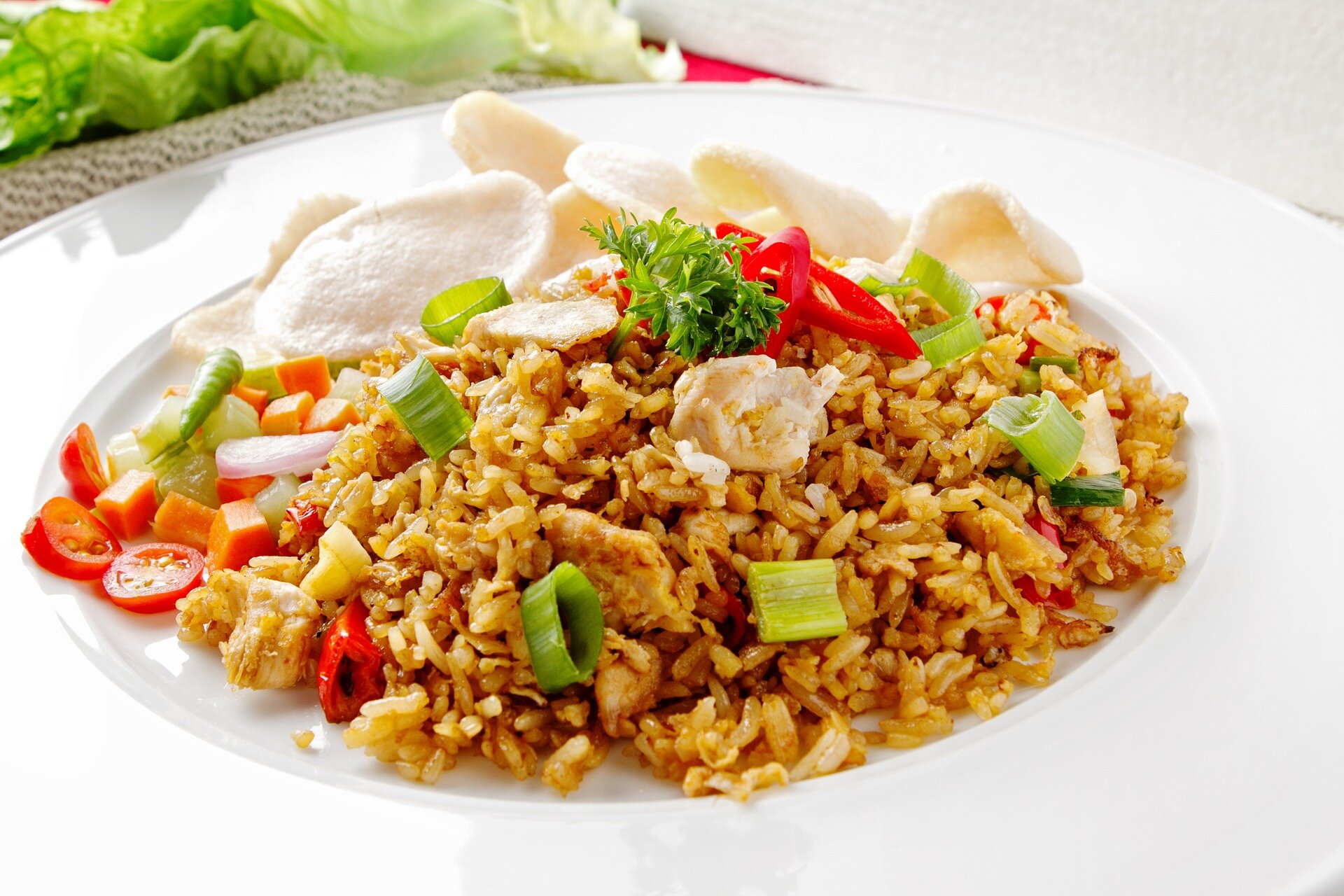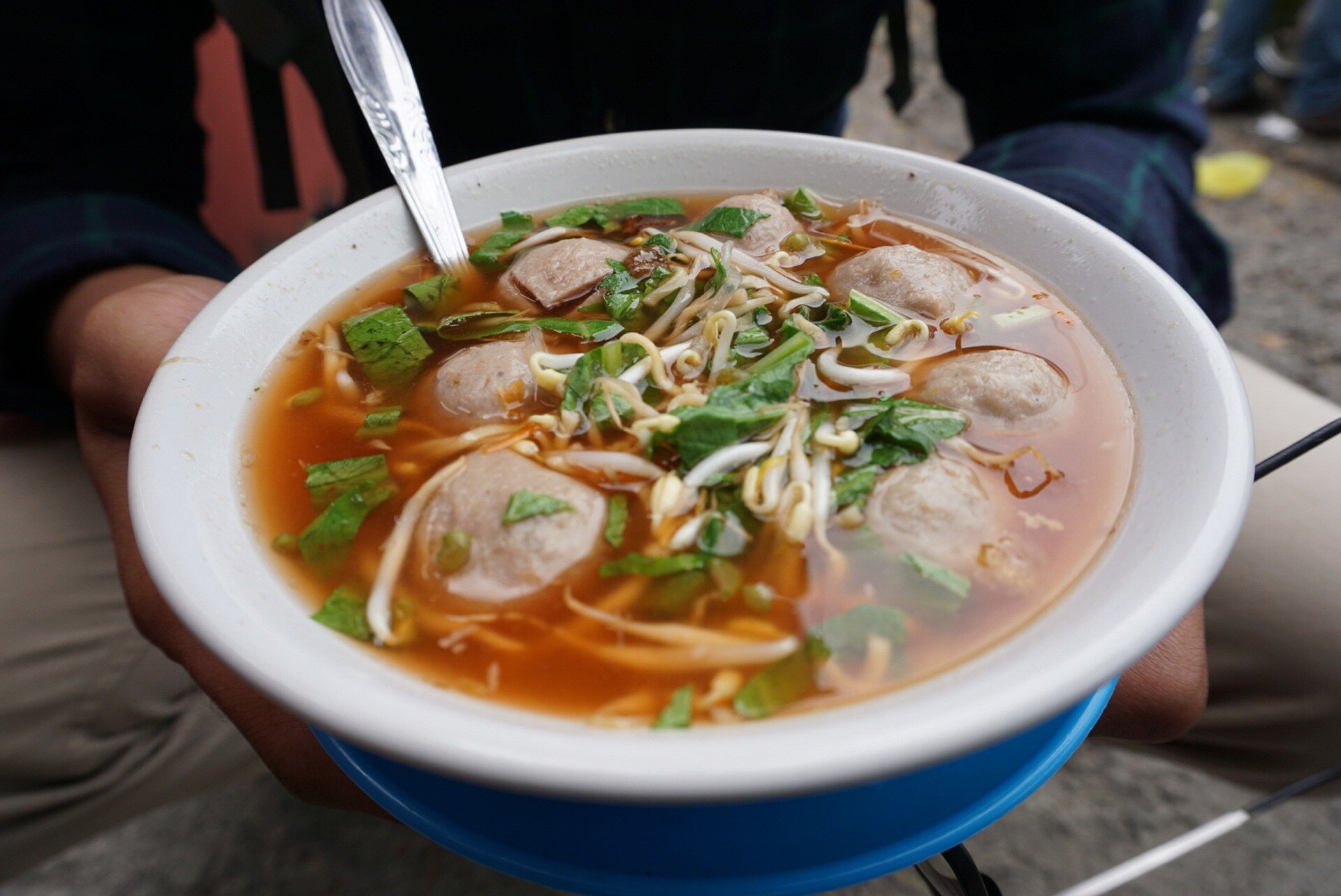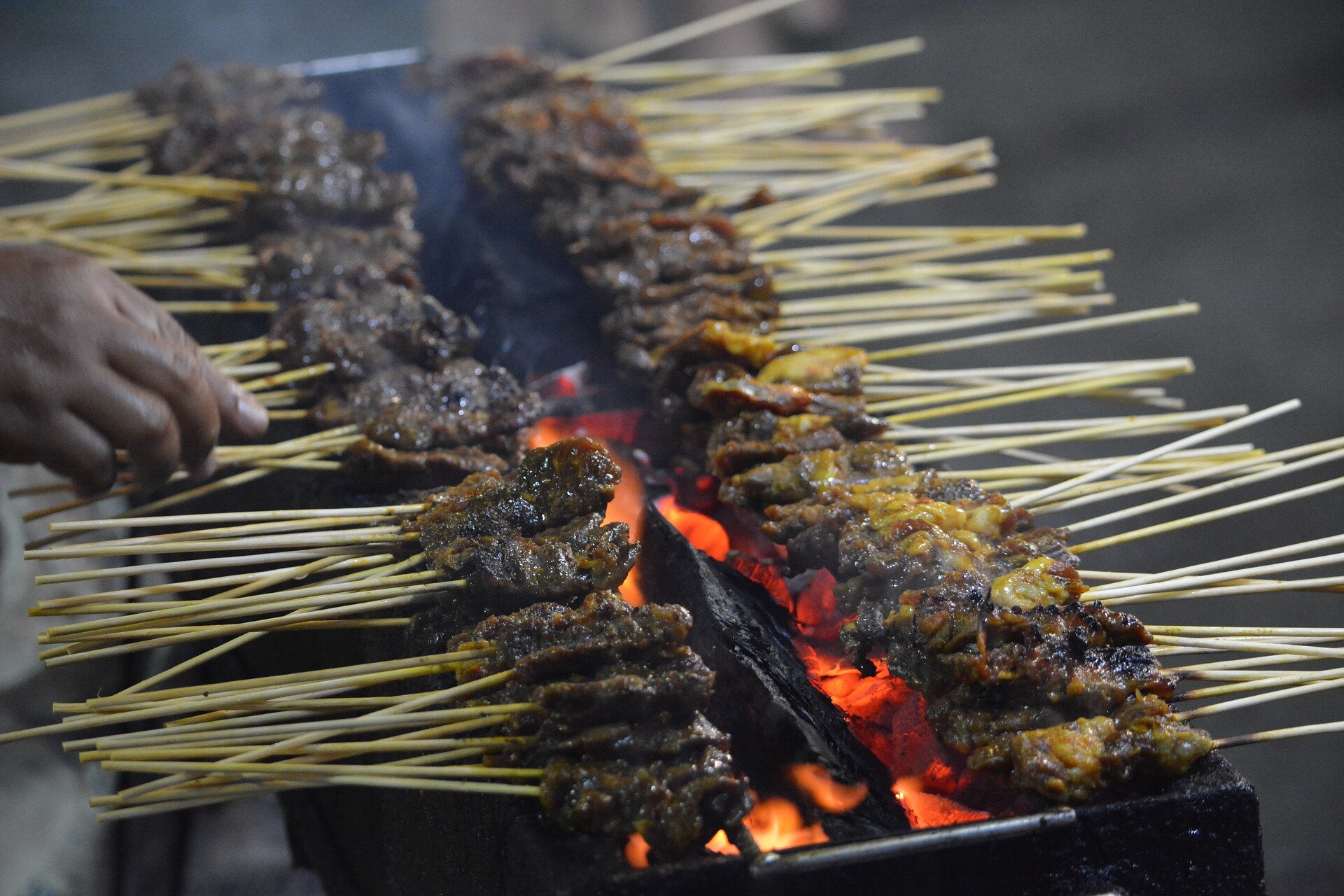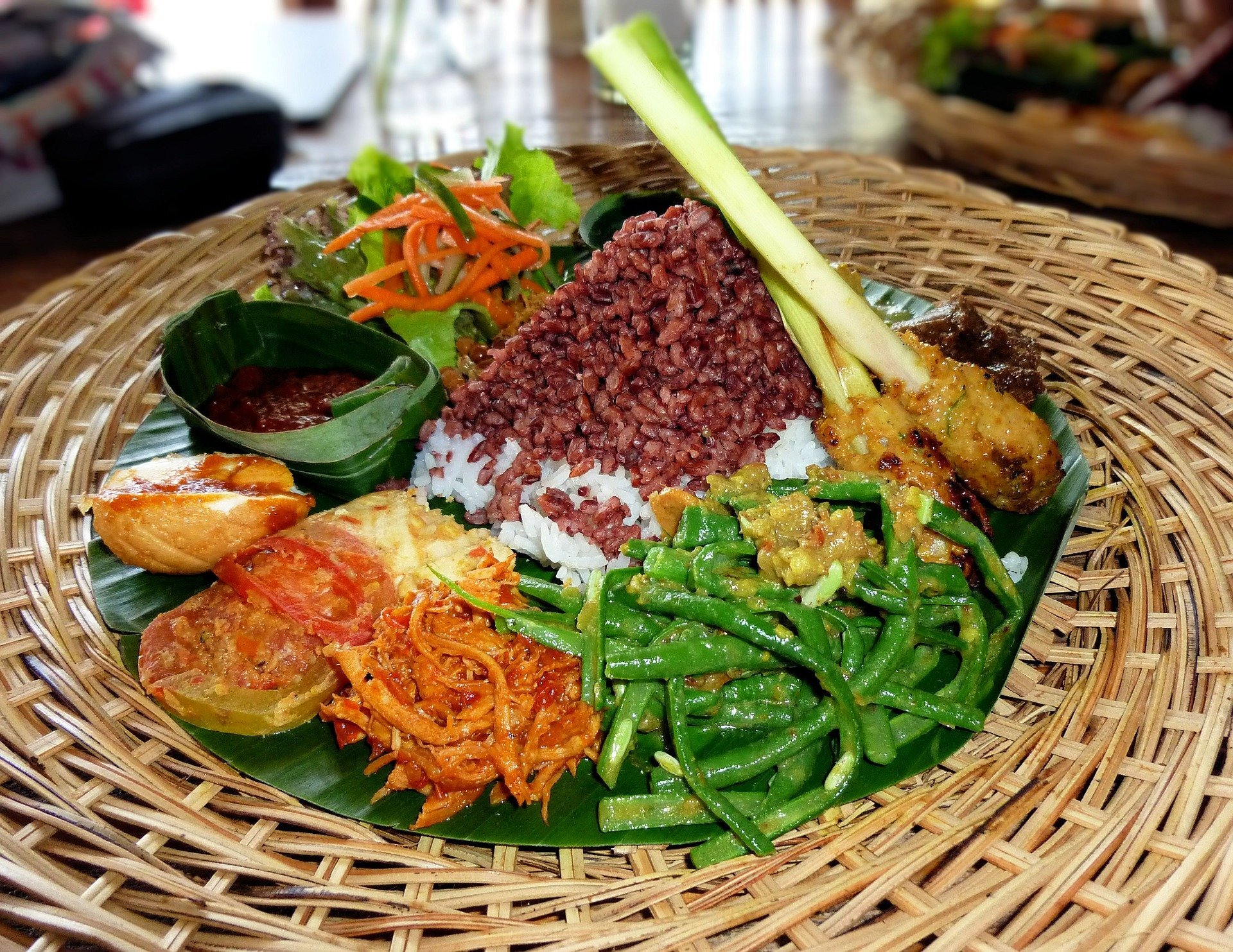Top 10 Indonesian dishes
This article was originally written for Seasoned Pioneers.
Spread across 17,000 islands and home to 270 million people, Indonesia is a diverse mix of landscapes, people, cultures and traditions. It also has a rich food heritage which has been influenced by different people, from the Arabian and Indian traders, to the Dutch colonists and Chinese immigrants. Here are just a few of the best Indonesian dishes you should try.
Nasi goreng
Nasi goreng, or fried rice, is one of Indonesia’s five national dishes. It’s one of the most commonly found dishes throughout the country, available anywhere from street stalls to high-end restaurants. Nasi goreng uses thick sweet soy sauce, white rice and any vegetable or meat that’s readily available – chicken, beef, egg, sausages, seafood, carrots, peas and bok choy are popular options. The dish is often served with acar, a vegetable pickle made from cucumber, carrots, shallots and bird’s eye chilli in a sweet and sour sugar and vinegar solution. It’s thought that nasi goreng is a product of the Chinese influence on Indonesian cuisine.
2. Rendang
Rendang is another one of Indonesia’s five national dishes. Originating from Padang in Sumatra, rendang is a rich beef stew in a thick gravy sauce. Beef is stewed in coconut milk and spices for hours on end until tender – a true labour of love. When all the liquid has evaporated, the beef turns dark in colour and is infused with powerful flavours. Rendang is found in Padang restaurants all over the country, where it’s served with rice and various side dishes including the famed green chilli sambal, another Padang specialty. Read more about the history of rendang in our blog post here.
3. Bakso
Bakso refers to both a single meatball or a dish of meatball soup. The meatballs are most commonly made from ground beef with tapioca flour and salt, although they can also be made from chicken, fish, shrimp or pork. The meatballs are usually served in beef broth with a mix of yellow noodles, rice vermicelli noodles, tofu, crisp wonton, hard-boiled quail’s egg wrapped in the meatball mixture, and topped with fried shallots and chopped celery leaves. There are also optional seasonings like chilli sauce, vinegar or soy sauce. Bakso can be found throughout Indonesia, from street vendors to high-end restaurants.
4. Soto
Soto is another delicious soup-based dish mainly made of broth, meat and vegetables. There are many varieties of soto found throughout the country, making it one of the five national dishes. The different varieties are divided either by region of origin or by primary ingredient. Soto ayam (chicken soto) is one of the most popular versions, and just like chicken soup, it’s seen as a comfort food. The yellow broth is made from garlic, turmeric, candlenut, ginger, lemongrass and kaffir lime leaves. Shredded chicken is added to the broth alongside vermicelli noodles, shredded cabbage, bean sprouts, fried shallots and hard-boiled egg.
5. Siomay
Siomay is Indonesia’s answer to dim sum. This steamed dumpling is made from fish or shrimp, sold as an assortment which includes slices of steamed tofu, potato, cabbage and hard-boiled egg topped with peanut sauce, soy sauce and chilli sauce. Derived from the Chinese shumai dumpling, it has since been adapted to suit local tastes with the peanut sauce and chilli sauce toppings. The best known variety of siomay is Siomay Bandung, originating in Bandung, Java. Today, most of the siomay sellers are from this region.
6. Sate
Sate (or satay) is easily one of the most popular dishes in Indonesia. So popular in fact, that it’s also a national dish. Although sate is simply skewers of meat cooked over coals, the variations of the dish are as diverse as Indonesia’s cultures and ethnicities. The meat can be chicken, beef, fish, mutton and pork, marinated in a mixture of soy sauce and spices and then grilled on charcoal. Sate is usually served with rice cakes and peanut sauce, or soy sauce mixed with chopped chillies. The Balinese sate lilit is a popular variant, made from meat mixed with grated coconut, coconut milk, lime juice, shallots and pepper. The spiced meat is wound around bamboo, sugar cane or lemongrass stalks and grilled.
7. Nasi campur
Nasi campur is one of the most commonly found dishes throughout Indonesia. It translates to ‘mixed rice’ and consists of rice with an assortment of side dishes like meat, vegetables, peanuts, eggs, tofu and crackers. The great thing about this dish is that there’s no set rule or recipe that defines it – each cook or seller decides what they’re going to cook and serve. Nasi campur is usually served in a warung – a simple local cafe – where you’re served a portion of rice and you can choose the different sides you’d like.
8. Martabak
Martabak is a type of folded omelette pancake stuffed with minced meat and vegetables, a popular street food in Indonesia, as well as Malaysia and Singapore. Thin stretched wheat dough is overlaid onto an egg and minced meat filling, together with shallots and coriander. When fried, the martabak pastry becomes blistered, resulting in a crunchy outer layer. A similar version of the dish is found in Arab countries where it’s called ‘mutabbaq’ which means folded.
9. Gado-gado
Gado-gado is another one of the five national dishes. This dish is often called an Indonesian salad as it contains a mix of vegetables with fried tofu, tempeh and hard-boiled egg in a spicy peanut sauce. The vegetables are slightly boiled, blanched or steamed vegetables, and usually include long beans, beansprouts, spinach and potatoes. Gado-gado is widely sold throughout Indonesia, with its origins thought to have come from West Java. Often served with rice cakes, this is a filling and vegetarian-friendly dish.
10. Gudeg
Gudeg is a traditional dish originating from Yogyakarta in Central Java. Young jackfruit is stewed for several hours with palm sugar, coconut milk, and spices like garlic, shallots, candlenut, coriander seeds, galangal, bay leaves and teak leaves which give the dish a reddish-brown colour. Served with white rice, gudeg is a fantastic vegetarian dish, but it can also be served with egg and chicken. There are several variations of gudeg – Yogyakarta’s ‘red gudeg’, Solo’s ‘white gudeg’ and East Java’s gudeg which is spicier and hotter compared to the gudeg from Central Java.








